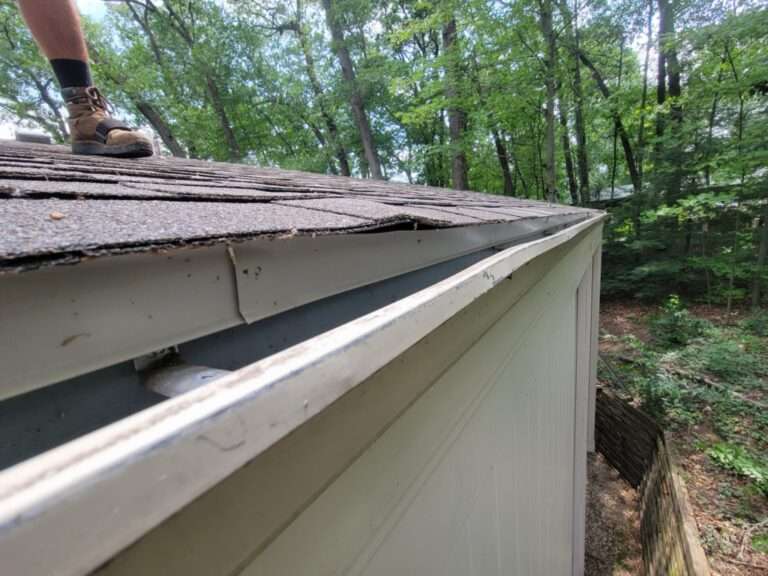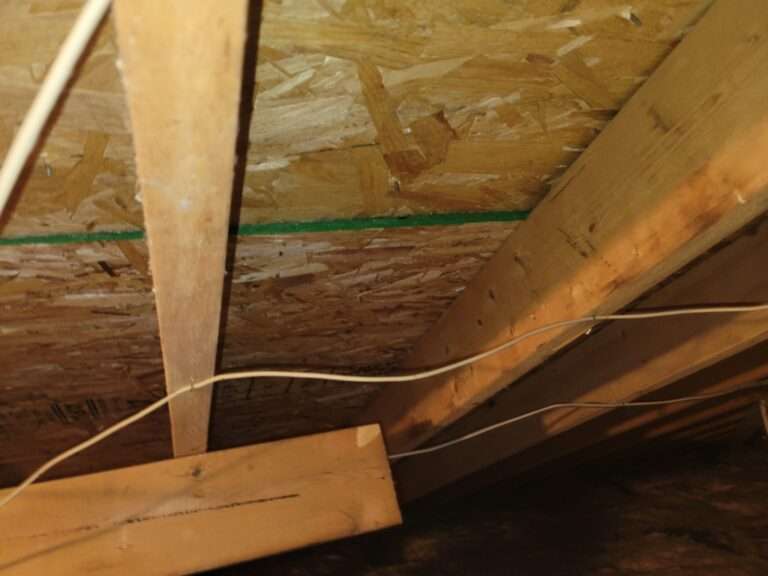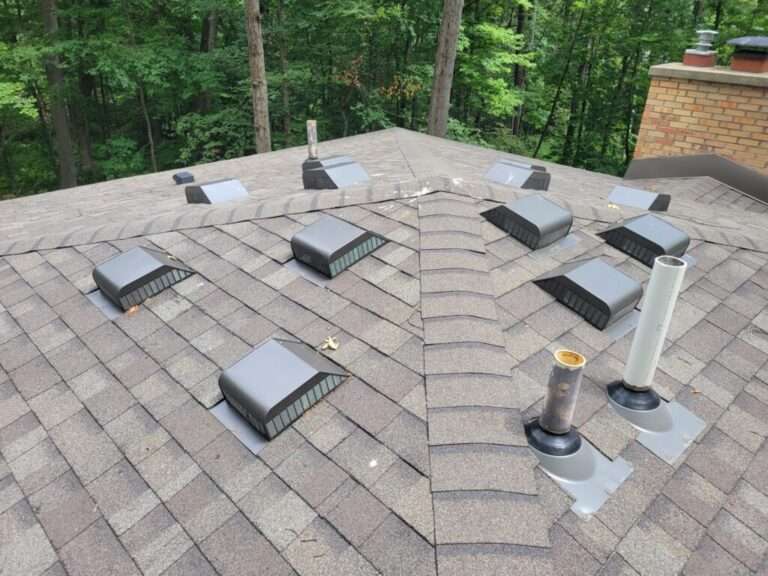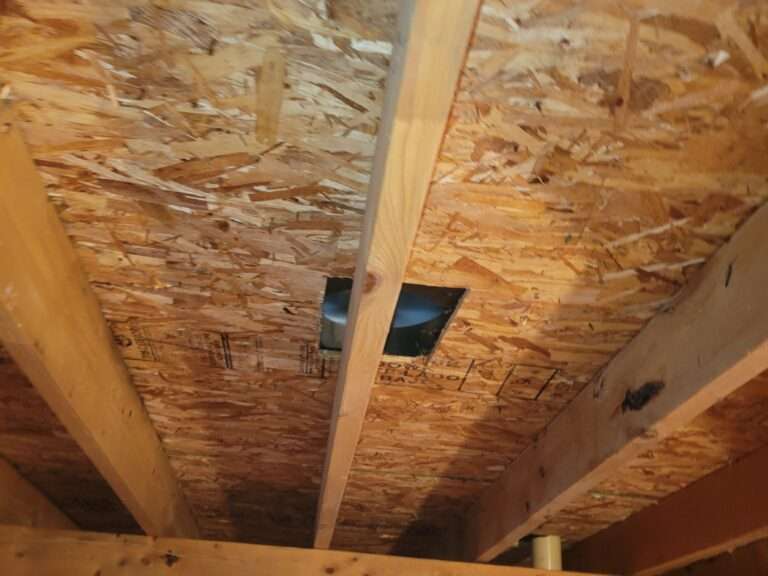Finding the Right Roofing Contractor
Roof Replacement work can start at $3,000 and quickly go upward to $35,000 depending on the home. Selecting decorative shingles on a complex roof design will greatly increase these figures.
You have one opportunity to pinpoint the right contractor for your home, and you want to be 100% confident that they can do the roofing project flawlessly based on the quoted price. In this industry, the typical roof replacement project is properly completed. But when a roofing project goes bad, it can be tragically and insanely traumatic.
I put this blog together to help you work through the process of selecting the right contractor that will reduce your home’s risks of issues.
This process can be overwhelming for a homeowner. I had one homeowner who requested quotes from almost 20 contractors to determine the right company for the job. A large pool of estimates won’t tell the story. As a matter of fact, this can cause confusion. You really shouldn’t need more than 3 or 4 qualified contractors to produce a great outcome.
I consider myself to be an expert in the roofing industry and I thought it would be valuable to have an insider scoop to select the right roofing pro for your home.
The statistics on who investigates, calls, and requests quotes for a roofing repair are primarily female, with a ratio of 60/40 percent from our analytics. But gender has a zero factor in selecting a good contractor. Most shoppers look at Years of Service, State Licensing, Insurance coverage, Work History photos, and Reviews. These items can be beneficial, but let’s look a little bit deeper at how you can be that super sleuth in getting into the details.
Let's Look At An Automotive Body Shop Example To Help in Finding A Roofing Contractor

Looking at another industry to get a better perspective on roofing services may make things easier in determining what questions to ask your contractor.
Your car is damaged, and you need to have bodywork. The damage may be significant. You look at that company’s Years of Service and Reviews as a reasonable consumer. Most likely, do not check on Licensing and Insurance because you expect the Body Shop to have these items in place.
The service provider is selected, and work starts on your beloved vehicle. But, do you know if they are using Original Equipment Manufacturer (OEM), Third Party Certified, or Third-World Non-certified Aftermarket parts to rebuild your car? This is particularly concerning if the airbag was deployed or if there was engine damage.
Will there be any Bondo work? How much will be used? Will the sheet metal be appropriately prepped, so the Bondo stays in place year after year?
Services are completed, but you could be driving a vehicle that is not as structurally strong as the original, or there could be hidden safety issues. The point is that you really can’t see under the paint unless you are a professional and have done regular inspections.
So let’s stop here for a minute, and can you come up with questions that you would ask the body shop based on the damaged vehicle shown above? I am not a professional mechanic, so I am not qualified to provide professional advice, but my list will be visible by clicking here. Please, try coming up with your list and then compare your results with mine. I will be specific and detailed.
Mr. Wood's Automotive Comments and Questions
Please note that if your vehicle is new or leased, you will want to talk to the dealership about this work to maintain the manufacturer’s warranty. These questions will still apply.
1. When the work is completed, will I receive a complete descriptive list of all components replaced? This will help you determine if there is a failure on one of the replaced parts that a warranty should cover.
2. I see that the door has been damaged. Will the full sheet metal be replaced with the original OEM components or other types listed earlier? Likewise, for the fender, bumper, lights, fascia, and hood. OEM and Certified Aftermarket parts will meet all the dimensional, structural, and safety requirements necessary to restore your car.
3. Will the Rims and Wheels be spin tested for damage? If the tire needs replacement in a 4-wheel-drive vehicle, will all the tires be replaced? Improper height between wheels can cause transmission stress.
4. There looks like there could be damage to the body frame. Will the body be mechanically straightened, and how is it verified? Can you receive a report on the realignment numbers? You may never use this information until you see excessive tire wear 10,000 miles down the road. This should be covered by the warranty and a new alignment.
5. Will the fluid reservoirs be checked for stress fractures and replaced if necessary?
6. Do they have an on-site electrical/engine/transmission mechanical department? Who will inspect, verify, certify, and warranty any work performed? There is nothing worse than driving that first 1,000 miles, and oops, there is an engine/mechanical issue. What is the company’s name performing the services, and what warranties are they providing? Ask about towing and loaners in advance of the service. Who will be the primary contact for these non-body structural issues?
7. I could go further with additional questions, but the key is to ask great informed questions. At the end of the repair, what will the Warranty life be for the engine/transmission and body? Mileage for engine/transmission and months on body repairs?
I had vehicle damage on a prominent chromed plastic fascia, and during one cold winter day, I had the car washed, and the chrome separated from the plastic. It looked horrible, and I could hand-pull the chrome off the plastic. It was covered, and I believe it was four years from the time of the accident.
Ok, How did you do? If you didn’t notice, it is all about being an informed consumer! It has always been about that. If you feel that there was a big question that was not asked, please send me a comment, and we may add your question to our list. If we use your question, we would like to send you a gift.
What can happen if things go bad with the Wrong Roofing Contractor
Let’s look at a real-world example of re-decking (replacing plywood decking and shingles). The homeowner wanted this work done because the decking had mold issues and the shingles were bad. The contractor is licensed by the state; they have many years of service, and they have great reviews.
Pricing should never be a factor with a project going foul because every contractor should perform all work to state code requirements and the shingle manufacturer specifications.
The Homeowner engaged the contractor, and the work was performed.
Five weeks after the work was completed, there was a rain storm, but none of the gutters worked adequately. Rain just poured over the edge of the gutter onto the ground.
The Homeowner called the original gutter installer to ask why the gutters were not working. It is here that the problem unfolds. The gutter company to a quick look at the work done on the home and suggested that Ethical Exteriors be used as a third-party inspection firm.
It should be noted that the contractor did a good job laying the shingles on the roof. It is under the shingles that problems were found.
Plywood Decking Not Cut Properly at Eave Edges and Extended Over Gutters

Plywood Not Installed Flush and Plywood is Overlapped

Box Vent Are Too Close Together

Box Vents Should Not Be Over the Joist-Frame

How to become an Informed Buyer in Selecting a Roofing Contractor
Did you know some Roofing Contractors may be excellent at roofing but lack the skill sets necessary for carpentry work and home energy airflow performance?
In this real-life example, there was a mold issue with the home from the very beginning of the project. It is why the homeowner asked for a re-deck.
So let’s review the issues found in this mold and airflow roofing example:
Not all Roofing Contractor understand Attic Airflow Issues
The roofing company did not fully understand the air seal needs between the home interior and the attic. They also didn’t comprehend the issues with airflow in a Hip Roof. Their Assumption was to add numerous roof vents at the top of the peak, causing the prevailing wind to enter from one side of the peak and exit out the other side of the peak, circumventing the deep air draw needed in the entire attic space. Inspect the three Roof Vents on each side of the Hip Roof, then look for the three holes through the plywood. Don’t you see three holes? Interesting, I only see one cutout myself!
Not all Roofing Contractor are skilled in Carpentry
Start Working On Your Roofing Contractor Selection
At the quoting stage, ask the Contractor to take pictures of the attic space during the inspection. Have them check the (soffit to roof) vents with photos to determine if they have obstructions. We have seen homes with soffit vents that lacked a cutout into the attic space or were obstructed with insulation or overpainted. Have them take pictures of the insulation and deck (plywood) to see if there are mold issues. Have them measure the current depth of the insulation. Ask the Contractor to look under the insulation on the ceiling for any evidence in mold growth. Ask the Contractor if he will provide these photos. These images will help you in keeping the work scope similar between contractors.
Doe the Roofing Contractor Perform Carpentry & Finish Wood Work
Ask the Contractor if they regularly perform carpentry work. Have they completed numerous jobs on new homes installing the decking (plywood)? At the same time, shy away from Contractors that only work on new homes. If I can use this analogy, it would be like asking an automotive assembly line worker that drops the engine in the car at the plant to fix an engine problem. Both are highly skilled but have different skill sets. Now!, look at the Contractor’s photo gallery and check it for applying plywood to a new home. Ask the contractor if you can talk to a builder that they did work for.
Is The Roofing Contractor Skilled in Mold Issues
Mold was found in your attic by the Contractor. The Contractor is telling you that the plywood decking has to be removed. Those pictures you asked for will help to confirm the extent of the Mold in your attic. Please request answers to these questions!
Questions For Contractor About Mold And Excessive Humidity
1) Is Mold present on the plywood, insulation, frame, and rafters?
2) Is the insulation or anything else in the attic currently wet?
3) Are any vent pipes broken or not projected through the roof?
4) Are bathroom fans blowing into the attic space and not vented outdoors?
5) Is Mold on the backside of the ceiling under the insulation?
6) Is there an active leak in the roof, and is the water pooling? A leak should cause discoloration in your ceiling.
7) Are there Can-Lights in the home not sealed in the kitchen or bathroom where higher humidity is exhausting into the attic? All Can-Lights should be sealed if they protrude into the attic space.
8) Do you have a home humidifier attached to the furnace, and is it set at 60% RH or higher? If it is, then discuss this with the Contractor.
Be Vigilant About The Root Cause For The Mold
They need to answer these questions because you need the Mold removed, but more importantly, can this Contractor resolve the issues causing the problem? You need to ask the Contractor if they are confident that they found the origins of the Mold and if they can remove it. Again, look at the Contractor’s website for photos for evidence of this work. More on this later.
A determination was made that you require mold removal, new insulation, new plywood, and new shingles. Tell the Contractor that you want your Inspector to look things over during these critical phases. But, be warned, a good contractor can complete just about any sized home in a week or two. Inspection delays can cost you money with roofing crews as large as eight professional team members on-site. It could also cause the Contractor to walk because there is so much work in this industry. But a good contractor shouldn’t have a problem unless there are delays.
Inform the Contractor that you will be requesting a final inspection at the end of the project with your Inspector. That should work, and we always have these types of requests. I would note that some counties, townships, or cities require their inspector to evaluate the home before re-applying all sheathing (plywood). This is called an Open-Board-Inspection.
There is no Shame in Hiring a Home & Roofing Inspector (Genius Move)
Re-roofing will cost a lot of money, and maybe you are starting to feel overwhelmed at this point. Call a qualified third-party home inspector to do an investigation of your attic and roof. Inspector assessments will not cost that much money but could go a long way in reducing your stress.
Talk to this Inspector about your plan and have that firm create a Scope-Of-Work (SOW) on what should be corrected. Provide that firm’s analysis to each Contractor that quotes your home. The SOW will keep things consistent, and the quotes should be similar.
If the Inspector found Mold in the attic, they should include this in their SOW with photos. Ask the Inspector if the Mold can be eliminated through chemical spray treatments or if it would require the replacement of the decking and insulation.
Ask the Roofing Contractor about their Subcontracting Practices
In the trades, subcontracting is everywhere. Please pay close attention to the Contractor that owns the company but doesn’t climb on the roof or doesn’t look like they have the hands of a skilled worker and will not give you answers to these questions. The same condition applies to estimators that are 100% sales.
1. Will subcontractors be used on my project?
2. As the company owner, will you work daily on-site with the subs to supervise the project?
Lack of supervision of the subcontractors is the real issue for lower project quality outcomes. The company that sold the job must be on-site with the workers…not 100% of the time, but regularly. This will all depend on the Lead-Supervisor and the complexity of the job.
3. Are you a salesperson for the company that submits the work to a subcontractor?
If the estimator is a salesperson and they submit all their work to a subcontracting firm, then get the name of the subcontractor(s) and check on their License and Insurance. Call the shingle manufacturer or local roof supplier to determine if they are certified installers for the shingles you want to be installed. Ask that you meet with the subcontractor or lead supervisor for your project. I will talk more about this later.
4. Is there a Lead Supervisor on my project, and can I meet and talk about my project and on-site preparation?
You want to have this person’s phone number and email. I will talk more about on-site prep later in this blog.
Again, be careful, don’t be too Bossy; that good Contractor may walk.
Roofing Contractor will not includes these items on their Quote.
If a contractor provides you with a price on the back of their business card, then run.
Also, Angi’s myth is that a contractor will break down the quote by Labor and Materials.
Any good contractor will generally not provide labor hours and material costs unless an insurance claim is required. They will price the work by Square Footage per the type of shingle selected, including the waste factors. The pricing will change based on the number of stories and staging requirements.
Below are the items that a good roofing contractor should have in their quote.
Ask the Roofing Contractor for an EagleView Report
Roofing Contractors should always Walk Your Roof
Will the Contractor want to inspect your home? If they don’t, then move on. One of our team members or I will always walk on the roof.
Before starting any quote, we study your home and walk the property for staging issues. We check the roof to determine if there is a need to replace plywood decking and look at the attic space. We have ten essential inspection items we look at when we walk your home.
Your Roofing Contractor must include these elements on Roof Replacement Quotes.
1) A complete description of the work to be performed. The contractor can line item the details or put them in paragraph form, but either way, it must contain all the details.
2) The number of squares to be replaced with the shingle’s manufacturer, style, and color.
3) It has to have notes about staging, shingle removal if needed, waste removal, and cleanup.
4) If there is a Skylight or Sun Tunnel addition or rework, typically this effort is on a separate line item with description and price.
5) If there is a Mold issue, it should be called out on its own line item with description and price.
6) If insulation services are added, this should be on a separate line item with a description and price.
7) Warranty period for the shingles and skylights must be called out, and all materials used must comply with the manufacturer’s installation warranty requirements.
8) Workmanship and materials warranty must be included.
Prepare The Following In Advance for Your Roofing Contractor On-Site Inspection and Quote
Before calling any contractors to quote your project, complete these action items. The more you know, the more you will look like an informed buyer!
A. Know your Shingle on the Home
Know your current shingle manufacturer, style, and color installed on your home. Check with a supplier to determine if that shingle is still available; if not, what is the replacement product?
If you don’t like the performance or color of your current shingle, select a different shingle before the quoting process. Stick with these name brands; CertainTeed, GAF, or Owens Corning.
Pre-determine the style and color you want. You will find these major shingle brands on our website with our professional recommendations for Michigan by clicking here.
B. Check that the Contractor is Certified for Your Shingle
Check the contractor’s website or call them to ask if they are certified installers for your selected shingle. Certified installers have been trained, approved, and installed these products multiple times. Therefore, they can provide extended manufacturer warranties.
You can start your contractor search by calling a local shingle wholesale supplier, like ABC supply. Ask them for a list of certified installers for your selected shingle.
Ask to speak to the inside representative that handles your area to get a quick rundown on great local contractors. You can also review the Manufacturer’s website for local certified contractors in your area.
C. Does Your City Require a Permit
Find out for yourself if a contractor is required to pull a permit to work on your roof. You can ask your local township about this requirement.
A contractor may not know the exact cost but will be knowledgeable if required. This is a double check to determine if they performed multiple projects in your area.
If needed, the contractor must pull the permit. Please request a copy for your records. If the city requires an inspection of the work performed, ask that you receive a copy of the inspection report and final approval.
D. Heavy Loads on the Driveway
A delivery of shingles to your home by a lift truck will be required to place the shingles on the roof.
The lift truck will weigh 65,000 pounds and approximately 250 pounds per square of shingles.
If your home requires 30 square of the new shingles, the total weight maybe 72,500 pounds or 36.3 tons.
You need to know if your driveway will handle this load. Figure this out in advance, if you don’t want any potential cracks in your driveway. Tell the contractor about this concern. You can ask the builder of your home what loads it can safely handle. Your neighbor may likely have the same driveway; ask them.
If a contractor is required to hand move and lift these shingles to the roof, the costs will go up significantly. You can ask the Contractor to price this process both ways and decide later. This is particularly an issue with concrete driveways. If you have a concrete driveway, it is not uncommon that the delivery company would ask for a waiver before driving on it.
E. Scope-Out the Staging Responsibilities
There will be a lot of work in staging the home. Tell the contractor that you want the pool, pool pumps, specific flowers, deck, railings, lighting, windows, and more covered and protected.
Agree to remove any patio furniture, flower pots, vehicles, and decorations.
Check that the contractor made notes on these items. They may not put this info into the quote, but it should be in the job folder. Ask the contractor for a copy of the staging list. A staging statement of work is helpful if there is an issue with something that was found broken.
Take dated pictures of everything before the contractor starts the project. This should include driveways, decks, siding, and mechanicals. If it can be moved away from the working area, then move the items.
F. Work Together on Clean-Up
Discuss clean-up. Tell the contractor that you are concerned about stepping on a nail(s), especially if you have kids. On a re-roof or re-deck, a lot of debris falls on the ground. There are old shingles, metal, and lots of nails.
If you plan to have your roof done, don’t spend much time getting all your gardening done around the home before the roofing project. Do the work afterward.
When the work is done, the contractor should use a blower to remove all debris from the completed roof project. Then they will walk around the home, blowing all the debris out of your shrubbery. A good contractor will use a wheeled magnet to lift the nails and scrap them into the dumpster. If your lawn grass height is three inches or more, the magnet will not work as well. Agree to mow the area at 1.5 to 2.0 inches before the job starts.
Remove or cover the wood chips around the home beforehand so it is easier to rake and run the magnet in these areas. Pulling the magnet around the house will need to be done multiple times.
Again, finding all the nails is challenging, and I would recommend wearing shoes for a while.
G. Garage Containers with Rubber Wheels Please.
If you are having a re-roof, a large garbage container will be needed to remove all waste. Ask the contractor if it will be a steel-wheeled trailer or a rubber-wheeled trailer. You want the rubber tire. Steel wheels can leave marks on the driveway and street.
H. Review Your Selected Shingle Manufacturer's Warranty Tables
Look at the type of warranties offered by your selected shingle manufacturer. We have them all listed directly on our website. You can verify the warranties listed and compare them to what that contractor stated. Click Here.
Compare these numbers to what the contractor provides. Now you can talk mono-on-mono about what you want in a warranty.
Also, manufacturer warranties may require their specific underlayment materials and accessories. Check for these details in the quote. This will eliminate future problems in the case of a warranty claim when the shingle manufacturer says that your contractor did not apply the approved underlayment materials and accessories.
I. Talk to a Professional Builder
You could also talk to a builder in your area that does alterations and add-ons. They will know the good from the bad actors in the roofing business. Ask them who they would select if they were going to apply your selected shingle.
J. Ask the Contractor for a Customer List
We provide customer lists to potential clients. That Being Said;
If I had to ask you for a glowing recommendation about your character, would you give me your mom’s or your mothers-in-law’s phone number? Point taken, right? So ask me for a list of customers. I will provide you with my best customers. So what do you do now?
Check out a company’s localization reviews. Still, even for a company like ourselves, we received a bad review by an ex-employee that we can’t seem to get removed, and we sent a request multiple times to Google about this issue.
Check their Better Business Bureau (BBB) rating. If something shows up here, then how was it resolved?
K. Every Contractor Has a Rainy Day
This is the point. Not all projects go perfectly well.
I had a project where the worker left the job site in such a hurry that he broke the basketball backboard and tilted the post with the back of the ladder truck. The customer was upset, and we straightened the pole and replaced the backboard and rim with new ones.
I had a project on a charming home; all the decking was removed, and there was a surprise shower. I had to clean up, fix up and finish the job.
Do not look for the contractor that says they are perfect; look for the contractor that is perfectly honest and always stands behind the work done. This is a contractor with good character, and you want this company for your home repair. These types of Contractors will be around for the long term!
Stay Away From The Storm Chasing Roofing Contractors
If there is a storm in your area, and you have a roof leak or damage, and someone shows up at your door immediately, that is the definition of a storm chaser. Be careful, and hold for a minute!
Roofing Contractors Near Me
If there is a storm in your area, and you have a roof leak or damage, and someone shows up at your door immediately, that is the definition of a storm chaser. Be careful, and hold for a minute!
Look at the Localization
Call Your Insurance Agent
In this situation, talk to your insurance company about your possible claim and who they recommend. Again, follow my recommendations to determine if they are certified installers for your shingles and talk to a local shingle supplier about their qualifications. They may be recommended by the agent, but they also may not be certified on your shingle.
Find a Roofing Contractor that has Good Character
Don’t meet with the contractor alone. Tag-team the meeting and ask about the contractor’s skill sets, capabilities, and character. Ask if they had any project failures and how they resolved the issues. Start by asking these questions.
Questions for the Roofing Contractor
A. What type of guarantee do you provide on workmanship and materials?
B. What is the length of a workmanship warranty, and what does it cover? Ask to provide examples of the workmanship issues the company took care of.
C. Will the materials and workmanship documentation include the details that were discussed? Can you receive the workmanship agreement with the quote?
D. With the quote, ask them to include their state license, general liability insurance, and worker compensation documents. Check that it has subcontractors included in its worker compensation. Please ensure these documents belong to the contractor and that the expiration date is current.
E. Ask about payment terms. If the contractor wants all payments in advance, then ask why. This is unusual. Maybe the contractor does not want to do your project…this happens… let them go. Contractors will want to be paid in full upon completion. We do the same thing. You may ask that a remaining percentage be retained for 30 days. They may agree to these terms. The payment holds don’t significantly affect quality issues, workmanship, and defective materials. In our example, the problem showed up five weeks later. Great contractors will correct any issues in workmanship and material defects. We have a 10-year workmanship warranty. You followed my recommendations and performed the investigations, have faith in your selected provider. Pay the contractor when the work is complete. The great contractor will take care of your issues.
F. If this contractor hangs around and generates a quote, Great. But if this person starts pushing you to sign a contract and drops the price by 10, 20, 30, or more percentage points, then Say NO! You rule the day, and it is your home. But, stay with the plan and don’t deviate. Perform the quote comparisons once all of them are in your possession.
G. Make sure you ask the person about their company and how they got started? How old is the company?
H. Ask the Contractor to talk about their workers. How many do they have? What are some of their unique work qualities? How long have they worked for the company? Make sure the Contractor speaks respectfully about their workers.
Make Notes on the Roofing Contractor Visit
Now, the interview process is over. Check out the Contractor’s Facebook and other social media to see if there is any smack about their customers. Investigate and discuss how you felt about this Contractor who came to your home. Was the person polite, informative, detailed, and of good character? Together, make notes about the visit.
Follow these steps to be a Roofing Contractor Pro-Buyer
I hope this blog is helpful. Now you can be that expert general contractor that rules the day in having services performed on your home. I say this because it is precisely what you are doing. You are the person who is responsible for overseeing this roof repair on your home.
If you have any questions about this process, please send them to us. We will try to get back to you right away. We would like to hear from you about your stories that made the process better for you. If we read anything that helps the customer become a better buyer, we will add it to this site.
Again, we would like to give you a gift if we use your insights.
Use this form below to send us your insights. Don’t hesitate to contact us if you need your home roof replaced by clicking here.











